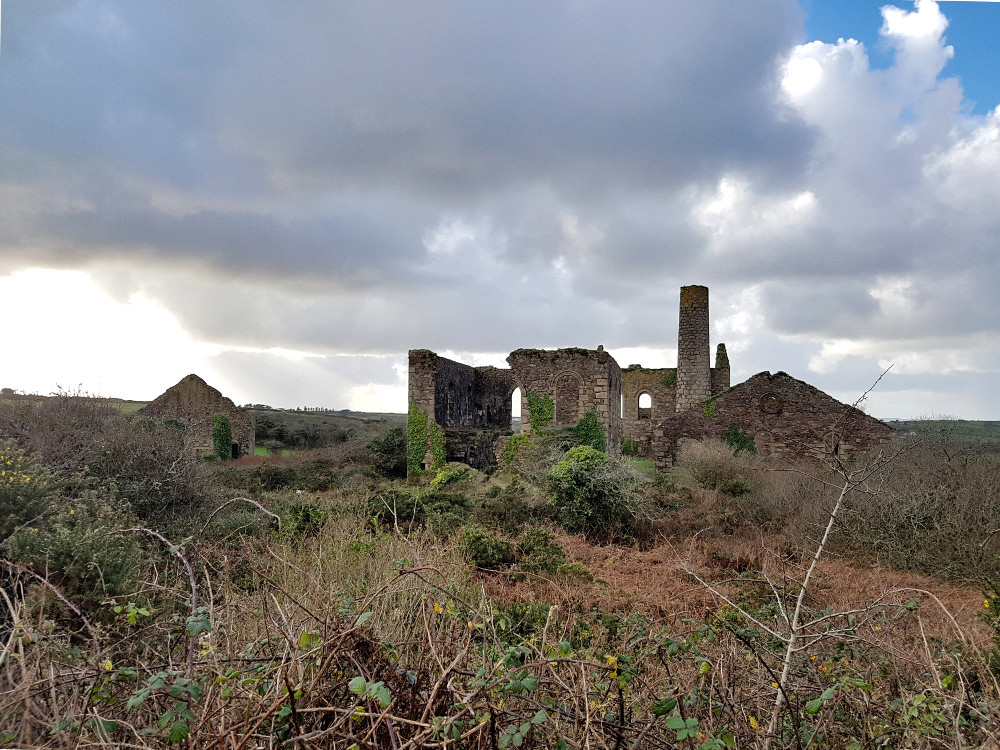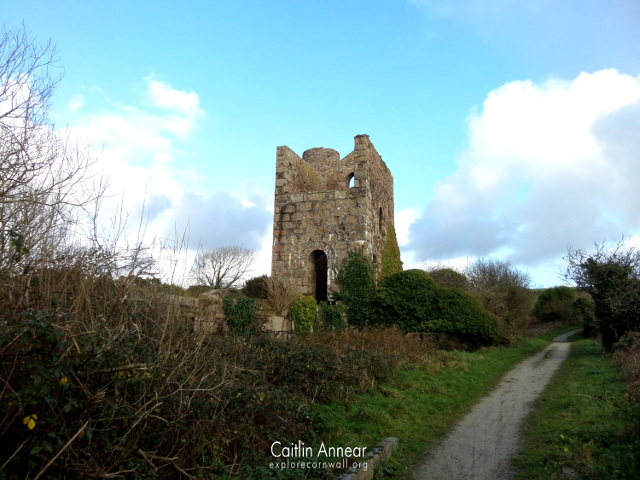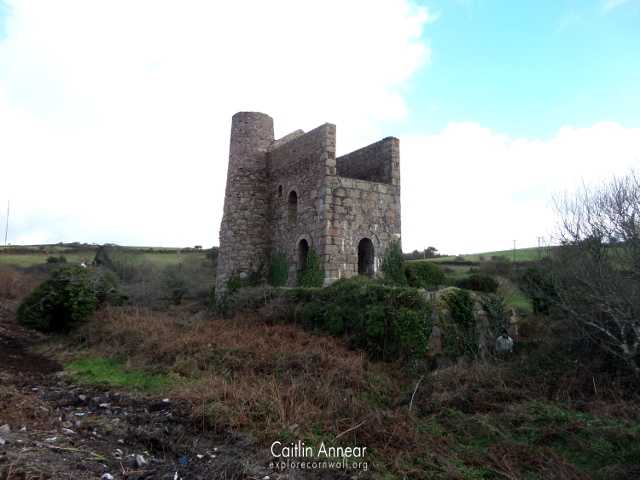Near the villages of Piece and Carnkie are the rare substantial remains of South Wheal Frances.

With records of mining in the area going back to 1720, South Wheal Frances has been active since about 1820. The remains on the Marriot’s shaft site date from around 1897-1900, with the original 80″ pumping engine being destroyed in a fire in 1895. Initially a copper mine, it gradually moved over to tin from the 1850’s, especially following discovery of the Great Flat Lode in 1886.
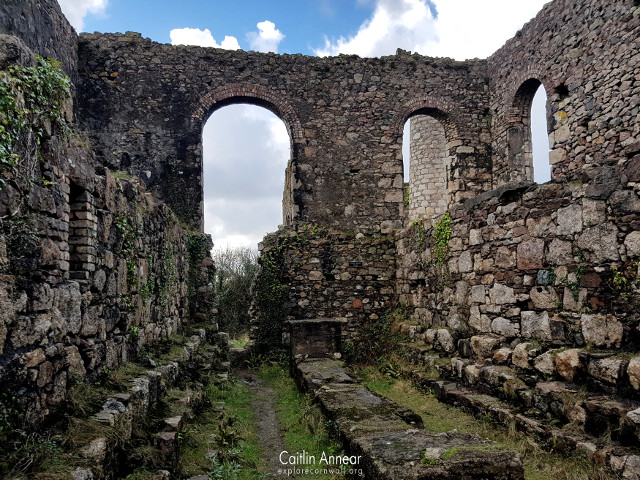
In 1896, South Wheal Frances amalgamated with its neighbours West Wheal Basset and Wheal Basset to become Basset Mines Limited, however there were a lot of continued financial issues and the mine finally closed in 1918.
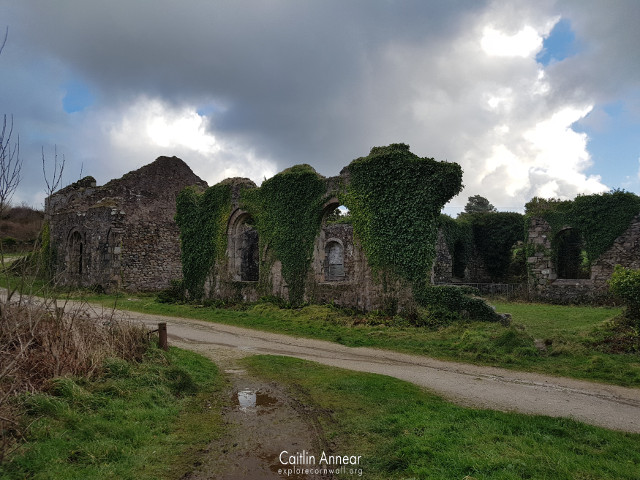
The star of this site is of course the main pumping engine house. This beauty was built in the 1897-1900 period and is slightly unusual in that it housed a inverted compound beam engine, one of only three or four in the world. Designed by Henry Davey of Leeds, it housed two cyclinders, one 40″ and one 80″, which stood at opposite ends of the house.
The 80″ cylinder had been rescued from the fire in the previous house, and was Cornish. The new engine cost £7,500 (£615,369.75 now).

Also making up the mains Marriot’s section of the mine is a two cylinder compound horizontal engine, a large miners dry, a variety of workshops, a Reidler air compressor, a steam capstan built, compressor house, ore sorter and an enormous boiler house which would have held six boilers.
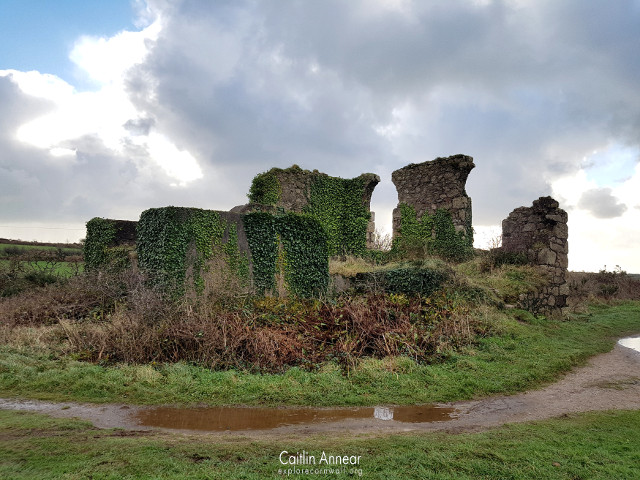
There was at least one other engine on the site, for which remains no longer exists. This was originally designed as a steam whim to haul from both Marriot’s shaft and Pascoe’s, but stamping was added to its repertoire later on.
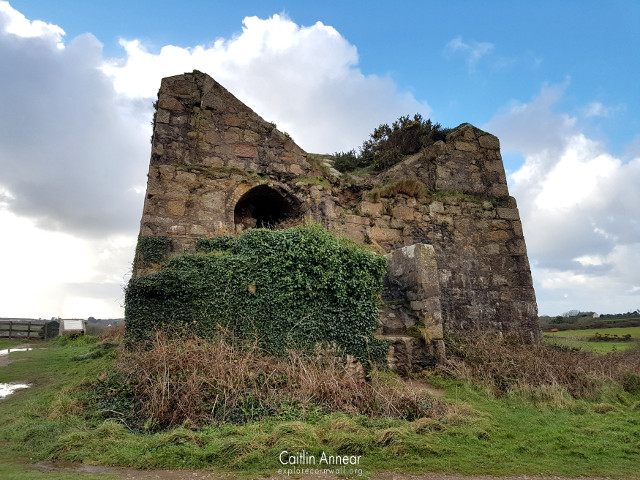
Pascoe’s pumping engine house was built in 1887 to house an 80″ engine. This house has unique slit windows, that were believed to add strength to the building. The pumping engine was built by St Austell Foundry and originally worked at Old Shepherd’s mine, Newlyn East, in 1881. In 1916, the main cap at the top of the piston broke, destroying the engine almost entirely. The driver only just managed to escape the scalding steam in the house, hiding on one of the bob plats over the shaft before being rescued. The engine was replaced by Worsley Mesnes and used the original beam.
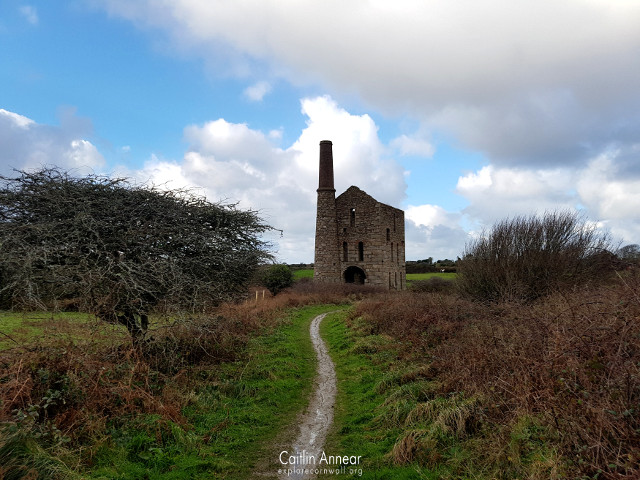
The pumping engine was built by St Austell Foundry and originally worked at Old Shepherd’s mine, Newlyn East, in 1881. In 1916, the main cap at the top of the piston broke, destroying the engine almost entirely. The driver only just managed to escape the scalding steam in the house, hiding on one of the bob plats over the shaft before being rescued. The engine was replaced by Worsley Mesnes and used the original beam.
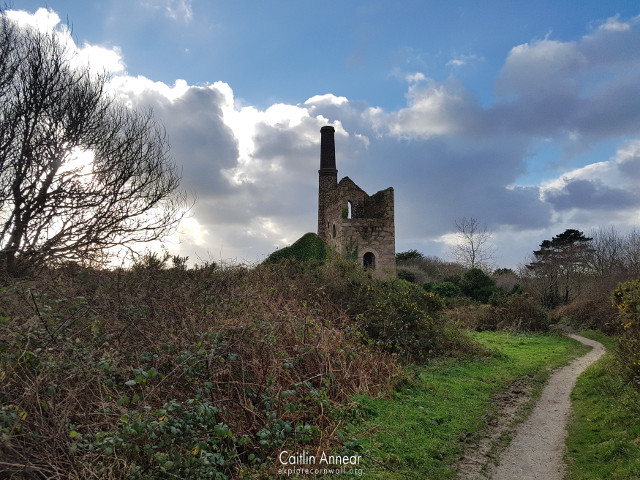
The 1879 whim and stamps house sits just down the path from the 30″ pumping engine. The boiler house on south-east side would have held two Cornish boilers.
Marriots (340 fathom/622m), Pascoe’s (340 fathom/622m) and Daubuz (230 fathom/421m), Richard’s (134 fathom/245m), Broad’s (130 fathom/138m), Pryors (120 fathom/219m) and Harvey’s (65 fathom/119m).
Great Flat Lode, North, Hamley’s, Basset/Great, Fisher’s/South and William’s.
1845-95
9,701 tons (9,856,671 kg) of black tin and 66,590 tons (67,658,564 kg) of 8.5% copper

The last engine house is a little further away and belongs to Daubuz’s 30″ rotative engine that both pumped and wound from Daubuz shaft. This was built in 1880.
The whole sit is free to access via public footpaths and open access land.
There is a small pot holed car park at the site.
Brown, K. and Acton, B. (2007) Exploring Cornish Mines: Volume One. 4th edn. Truro: Landfall.
Nance, D. and Brown, K. (2014) A complete guide to the engine houses of West Cornwall. Gloucestershire: Lightmoor Press.
Dines, H. G. (1956) The metalliferous mining regions of south-west England. British Geological Survey.
The National Archives (no date) ‘The National Archives – Currency converter: 1270–2017’. The National Archives. Available at: https://www.nationalarchives.gov.uk/currency-converter/#currency-result (Accessed: 13 March 2018).
